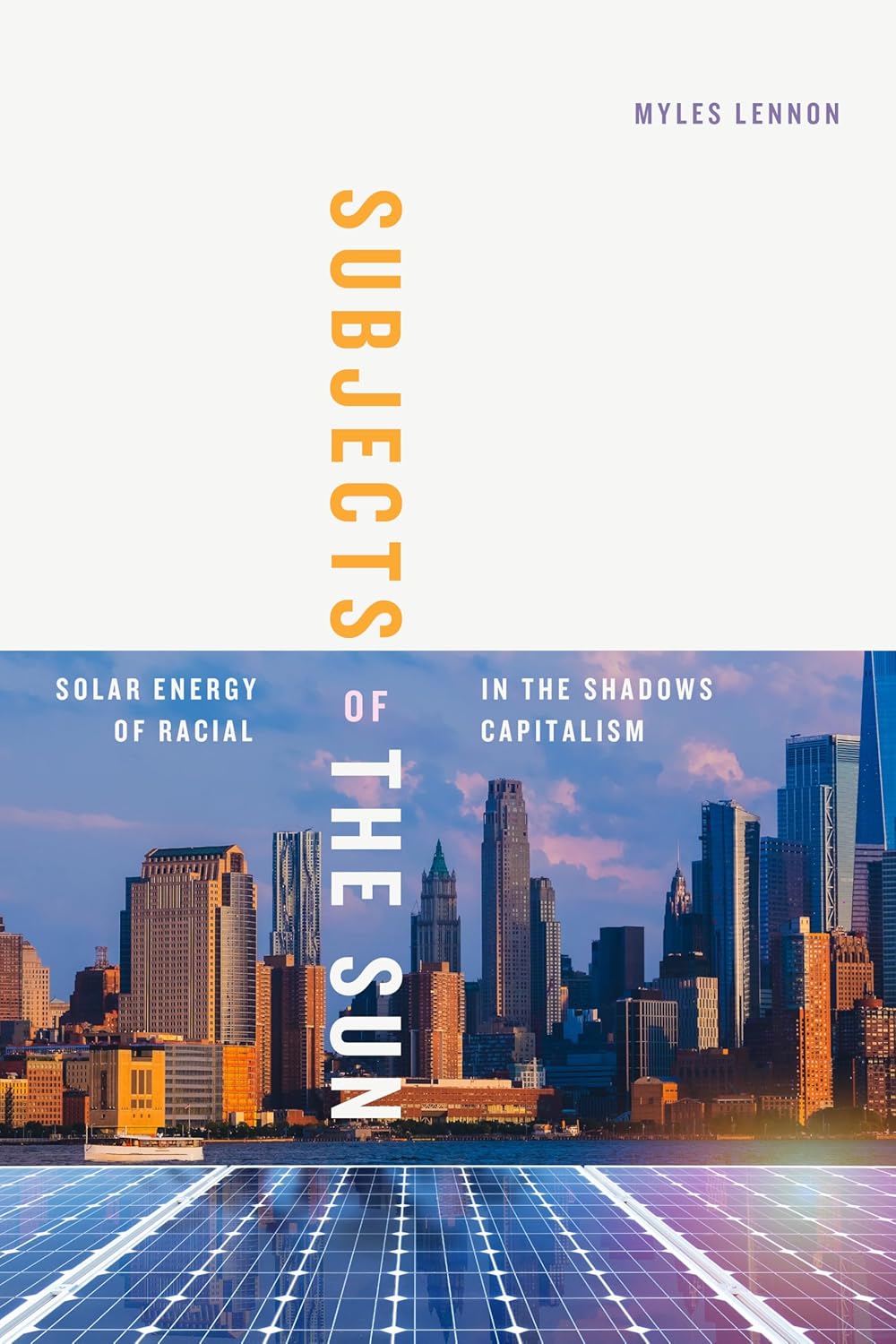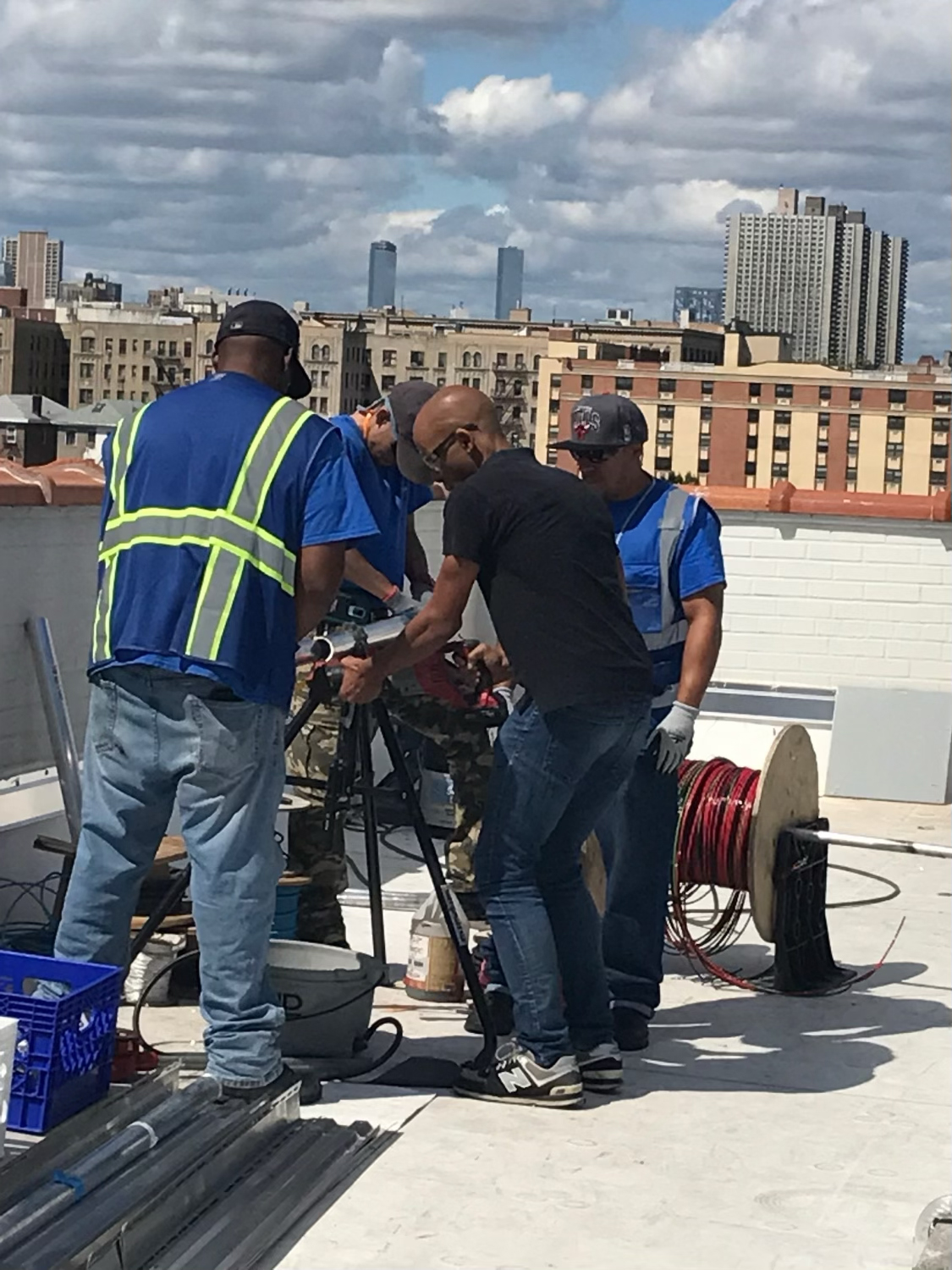PROVIDENCE, R.I. [Brown University] — Early in his career, Myles Lennon spent eight years working in renewable energy policy in his hometown of New York City, where a clear disconnect emerged for him.
“What I found doing this policy work is that so many of the practical approaches that we use to bring about change in the environmental field are actually incredibly theoretical,” said Lennon, a graduate of Brown’s Class of 2006. “And what happens on the ground often doesn't align with the intention of a piece of legislation.”

He went on to earn a Ph.D. in anthropology and environmental studies, and in 2019, returned to Brown where he now serves as an assistant professor of environment and society and anthropology. He’s a core faculty member at the Institute at Brown for Environment and Society, where he conducts research and teaching on renewable energy and climate action.
In his first book, “Subjects of the Sun: Solar Energy in the Shadows of Racial Capitalism,” published in June by Duke University Press, Lennon explores avenues for lower-income communities of color, solar energy corporations and environmental organizations to establish a more equitable energy future through solar power.
Lennon spoke about his research, teaching and his new book in a Q&A.
Q: How did you develop an interest in the environment and anthropology?
It largely came from growing up in a working-class community of color in Queens, New York, that disproportionately shoulders the environmental burdens of the fossil fuel economy. As a kid, when I looked out of my bedroom window, I wondered why I couldn’t have green space like people who lived in wealthier communities.

That’s the basis of my advocacy work that focused on bringing energy efficiency and renewable energy to low-income communities of color in the city I grew up in. I later turned to anthropology because I sensed there were complex dimensions that get lost when we see environmental problems simply in terms of technocratic solutions with a prescribed formula or with metrics. Anthropology can correct for these oversights by offering more grounded, empirical perspectives on how humans actually steward the environment.
Q: What does “Subjects of the Sun” add to the conversation around renewable energy?
A lot of the interest around renewable energy does not consider the complications of our energy infrastructure system. The first industrial-scale energy infrastructure was not the electricity grid or the transcontinental railroad system, but the transatlantic slave trade — so racial inequality was embedded in the ways that we produced energy and powered the economy in North America from the outset of colonization. As we transitioned from slavery to fossil fuels, the racial hierarchies of slave-based energy production stayed intact such that Black and brown folks the world-over continue to be disproportionately burdened by our fossil fuel energy infrastructure and even emergent renewable energy infrastructures.
For example, battery storage technology for solar is dependent on cobalt, and cobalt is mined in the Democratic Republic of Congo, largely by children, but also by adults working under conditions that are comparable to slavery. And the demographics suggest that many of the people who install solar are people of color, especially in places like New York City. They’re often exploited, and they’re often undocumented workers. So in all these ways, racial capitalism is central to the production of solar.
My hope is that as we transition to cleaner energy sources like solar that we think in a nuanced way about confronting those inequalities instead of simply saying solar is better than fossil fuels.
Q: How does the book address some of the problems you’ve identified about the clean energy transition?
In the book, I look at the everyday ways in which laypeople, professional energy experts and environmental justice activists actually go about transitioning our energy system to solar power. And while this transition is an intensely physical process that entails mineral extraction, manufacturing, the built environment and hands-on labor, I found that the people actually leading this transition have no physical relationship with solar infrastructure. They largely work on solar though screenwork: Instagram, PowerPoints and Google Earth, among other media. As a result, so many of us lose sight of the fact that solar is primarily manufactured in exploitative and unsustainable conditions, such as coal-powered factories in western China that essentially enslave workers. The book urges us to move from screenwork to a more corporeal and physical relationship with solar energy to address these contradictions.
Q: How can the average person advance the transition to renewable energy in responsible ways?
We can tap solar power in ways that enhance our bodies’ capacity to steward the land, compost waste and grow local food. This is what young people of color are doing in Brooklyn, using solar-powered e-trikes and solar-powered mechanical sifters to turn food scraps from all over the city into a regenerative garden space that safeguards against climate-related flooding, enhances biodiversity, cultivates local food and creates space for community leisure.